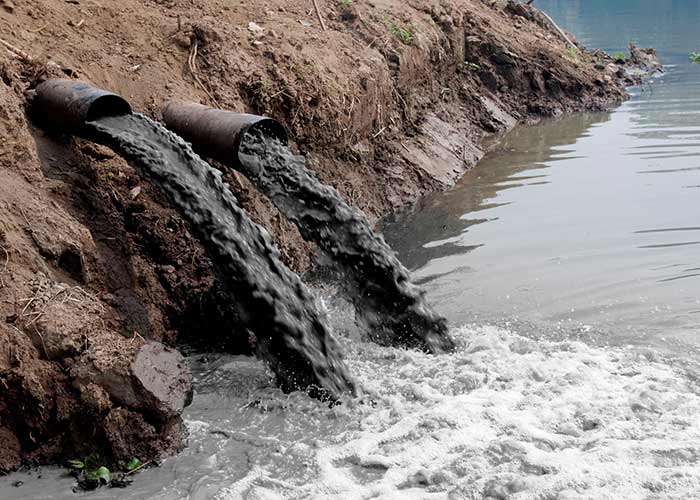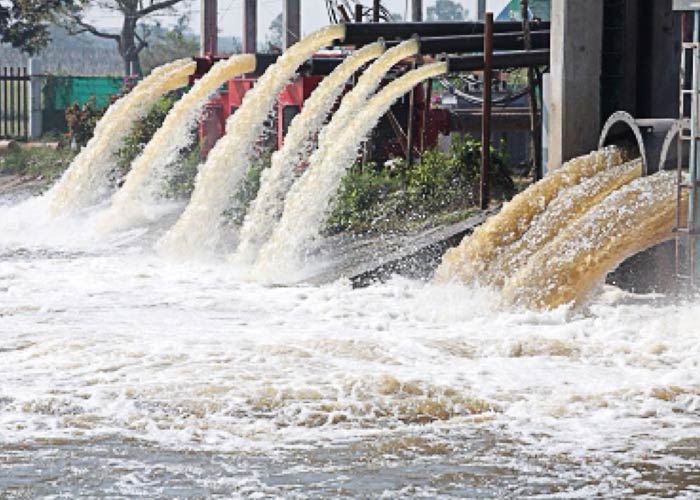Due to global warming, the temperature of the Earth is continuously rising. There are tremendous changes in the climate with natural calamities striking us too often. The rise in sea level, changes in weather, melting of glaciers, decrease in forests, destruction of many types of organisms and vegetative species, increase in various diseases, etc are seen in all parts of the world. In fact, global warming is a major issue related to the existence of mankind. That’s why everyone should know about it and take steps to counter the threat posed by it.
What is Global Warming?
Global warming means continuous rise in Earth’s average surface or environmental temperature due to greenhouse effect. Now what’s greenhouse effect? The Earth’s atmosphere is composed of nitrogen, oxygen, etc which is responsible for maintaining average temperature for life on Earth at 16 degree Celsius. When the sun rays collide with the Earth’s surface, most of the energy is absorbed by greenhouse gases such as carbon dioxide, methane, nitrous oxide, sulphur dioxide, carbon monoxide, while a part of the solar radiation called infrared radiation returns into space by means of clouds, snowflakes, and other reflective things.
Reasons/Causes of Global Warming
The most important reason for the increase in the temperature of our Earth is the continuous increase in the pollution, due to which the level of greenhouse gases is increasing, which is damaging the ozone layer. With the Industrial Revolution over the last hundred years, the proportion of carbon dioxide and greenhouse gases has increased in the atmosphere.
Increasing number of factories, vehicles, fossil fuels, and the population of humans all have contributed to the increase in the amount of these gases. The use of chemical fertilizers and pesticides is also increasing pollution in soil, water and air. Due to the cutting of trees and use of fossil fuel (coal) to operate power plants, the level of carbon dioxide is increasing. As a result, the quantity of sun’s heat absorbed by them has also increased, leading to global warming.
Effects of Global Warming
Due to more emissions of harmful substances, glaciers are melting, and sea water levels are rising, posing a threat to coastal areas around the world. Global warming is also leading to increasing incidence of droughts, water shortages, famine, floods, landslides, hurricanes, changes in rain patterns and more such extreme climatic conditions. The temperature of Earth has increased between 0.4 to 0.8 degrees Celsius (1.4°Fahrenheit) in the last hundred years.
Sea is present in more than 70 percent area of the world and has an extraordinary impact on global weather, but the heat from global warming is rapidly landing in the sea.
A report published in the Science journal said that the temperature of the sea has been rising since the last 60 years and now it is growing 13 percent faster than the previous estimates. Earlier it was said in 1992 that the global sea temperature doubled compared to 1960.
According to the author of the report of this study, the rate of sea water heating has increased rapidly over the last 60 years as 90 percent of the heat emanating from the greenhouse gases can be absorbed in the sea.
Experts say that it has been proved that the oceans play an unusual role in the climate system and their heat is affecting the entire system of the Earth. We have seen that 2016 was recorded as the hottest year of history.
Following are the effects of global warming at a glance:
1: – The melting of glaciers.
2: – Depletion of ozone layer.
3: – Toxic gases in the environment.
4: – Unseasonal rains.
5: – Fierce storm, cyclone, hurricanes and droughts.
6: – Different types of skin ailments, cancer-related diseases, malaria & dengue.
7: – Disappearance of many species of birds and animals who are unable to cope with the changing environment.
8: – Increasing incidence of forest fires.
9: – Increasing risk of flood as snow melts on the mountains.
10: – Expansion in the desert due fierce heat.
11: – Decreasing forest cover.
Global Warming Information and Facts
Greenhouse effect (highly responsible for global warming) is the natural process of the environment, it is not a bad thing in itself – the ability of the atmosphere to capture the sun’s warmth keeps the Earth warm to sustain life as this energy remains present on our Earth in the form of heat. If greenhouse effect does not happens, the average temperature of the Earth will fall below zero centigrade and the whole earth will be covered with snow.
Unfortunately since the industrial revolution has occurred, the human activities have increased the presence of greenhouse gases beyond desirable levels. The amount of sun’s energy returned into space is gradually reducing as the greenhouse gases absorb more of the solar radiation, capturing more warmth than required and not allowing the heat to return into space.
Chlorofluorocarbons (CFCs) form another group of greenhouse gases, which are responsible for depleting the ozone layer – a high level layer of gas in the stratosphere that helps to keep out harmful ultraviolet rays. The ozone layer prevents the sun’s dangerous rays from damaging the Earth. But the holes in the ozone layer are adding to the greenhouse effect.
According to the scientists of the Intergovernmental Panel on Climate Change (IPCC), the global sea level grew to 3.1 mm/year from 1993 to 2003. In Europe, there was so much heat in July-August 2003 that it broke the record of the past 500 years. During this time, 27,000 people died in the heat wave in the world and economic loss of 14.7 billion Euros occurred while the loss of agriculture, forests and energy sectors could not be assessed. In April-June 1998 alone, 3028 people died due to heat loss in India, while in the cool city like Chicago 528 people died due to hot winds in five days in 1995. On July 13, 1995, the temperature in the city was recorded at 107°F (42°C). Similarly, in December 1999, in Venezuela, it was so raining that about 30000 people were killed. As many as 5748 people were killed due to the cloudburst from 15 to 17 June 2013 in Kedarnath in Uttarakhand.
In the last 50 years the size of the glaciers has decreased by 16 percent in the United States of America. In 1972 there were 6 glaciers in Venezuela, which has now reduced to two and it is estimated that if there is an increase in global temperature, then it will end in the next ten years.
The rise in sea surface, changes in weather, melting of glaciers, decreasing forests, destruction of many types of organisms and vegetative species, increase of various diseases, etc are seen in all parts of the world.
Asia, the United States of America and Europe are responsible for 88 percent of the world’s total carbon dioxide production. Between 1990 and 2012, they produced 42 percent of carbon dioxide emissions, 9 percent of nitrogen oxide, 15 percent of methane and double the amount of chlorinated gases.
According to an estimate, 35 percent of plant and organism species will become extinct by 2050. In the last week of February 2016 due to the race of economic development, pollution in China’s capital, Beijing increased so much that the announcement of environmental emergency had to be made. Similarly, in Delhi in November, 2016, the Indian government closed schools in the capital for three days and banned construction and demolition for five days following heavy smog and concentrations of harmful PM2.5 pollutants.
Impact of Global Warming on India
The side effects of global warming are visible on the soil, air, water, which are the basic foundations of life. In the name of advanced agriculture, India’s traditional organic farming was destroyed. Likewise, in the 1970s, borewells were dug in the place of wells, resulting in the depletion of groundwater sources in millions of villages.
According to a report by Sinha and Swaminathan in 1991, if global temperature increase by 2 degrees Celsius, then paddy production will fall by 0.75 tonnes per hectare and wheat 0.45 tonnes per hectare. According to the 2013 Indian Government report, paddy production in India stood at 35.9 tonnes per hectare, whereas it stood 66.86 tonnes in China, 42.19 tonnes in Bangladesh and 40.81 tonnes in Myanmar. At the same time, we are also behind the production of wheat, jowar, maize, millet and pulses. In the production of pulses we are far behind Bhutan, Nepal, Sri Lanka, Bangladesh, Myanmar and China. According to the mathematical model of the Indian Council of Agricultural Research, due to global warming, the production of wheat and paddy can be reduced by 6% and 4% respectively.
Together we also need to develop the understanding of promoting herbal plants and connecting life to its roots or traditional things. All our festivals are made in terms of nature and environment. We have always been worshiping trees, rivers, ponds and Earth, but a well-educated modern society has thrown these traditions into the dustbin due to stereotyping and today our garbage piles are growing. If we have to save the Earth’s environment, to save ourselves, then we will have to awaken our traditions, and gain eternal consciousness again.
Kyoto & Paris Climate Agreements
The magnitude of the problem of global warming has brought many countries of the world on one stage. A solution is being sought to solve this problem. Under the Kyoto Protocol set up in 1997, many countries of the world will reduce the emissions of carbon dioxide and other greenhouse gases. This protocol has come into effect since 2005, but India and China disagree with its many provisions. These two countries consider the policies adopted in the Kyoto Protocol to stop global warming, as a hindrance in the development of their country. In the 2015 Paris meeting, many things were agreed upon.
The Paris International Climate Agreement was implemented from 4th of November 2016 worldwide. Now, the pressure to bring greenhouse gas emissions reduction in all countries and reducing global temperatures has increased the pressure to implement the agreement. At the same time, it proves that the all the countries are increasingly conscious to overcome the rising global temperature. 96 countries, which account for two-thirds of greenhouse gas emissions in the world, have formally joined this agreement. After their involvement, it was turned into an international law. It includes 55 countries which emit more than 55 percent of the greenhouse gas in the world. The countries involved in the agreement want to limit the global temperature below 2 degree Celsius. Many more countries are expected to join the agreement in the times to come.
How to Prevent Global Warming/Solutions of Global Warming?
- To prevent the effects of global warming, it is necessary that we take immediate hard steps for this. We have to reduce the proportion of carbon dioxide and greenhouse gases in the atmosphere.
- It is necessary that we minimize the use of fossil fuels, and reduce pollution in factories.
- Control of emissions by vehicles is necessary too.
- We have to use sources of energy in which carbon is used in a limited amount or not at all, such as solar energy, atomic energy and wind power etc.
- Trees, our biggest helper in our fight against global warming, should be protected from cutting and more trees should be planted.
- If mankind has to move towards sustainability, it has to take into account those things which nature can give to us again and again.
- We should take the resolve to save the Earth and the environment. Public awareness campaigns, meetings, seminars and conferences, and programs like planting trees, cleaning streams of rivers need to be organized.
- Climate change needs to be understood closely. And this understanding should not be confined to scientists only, it is necessary to bring this knowledge to the common man.
- The government can employ such devices in domestic aircraft which can give us an opportunity to know about the climate of the upper surface; the data obtained from it can be used for betterment.
- How water has been polluted in recent times, is a matter of deep concern. Reducing pollution will also entail the responsibility for monitoring the quantity and quality of water.
- We should deliberate seriously upon preserving the Earth in the future. The focus should be on how the Earth can be sustainable and worth the use.
- We know that we do not have control over natural disasters, but if we understand the global warming, by protecting the environment from being contaminated, major disasters can be avoided.
- We should reduce mounting pressure on mega cities. If we develop rural areas, the unnecessary pressure on big cities and metropolitan areas will be reduced. We have to develop alternative means of livelihood. For example, new varieties of crops.
- We should aim at creating less carbon by embracing natural, renewable and clean energy sources like bio fuels, wind power and solar energy. We should replace contaminated fossil fuel manufactured energy with renewable energy.
- Forests need to be protected as they are the lungs of the environment. Trees should be saved, forests should be conserved, more plantations should be initiated and forests fires prevented.
- There is a need to decrease the use of fossil fuels.
- Non bio-degradable substance such as plastic should not be used.
- We need to go for less emission of unwanted gases, and then bring it down to zero level as fast as possible.
- Tropical forests should be protected with a special funding mechanism.
- The use of nuclear energy should be minimised.
- Industrial and domestic wastes should be recycled.
- Pollution-producing vehicles have to be banned.
- We should reduce the use of air conditioners and other cooling equipment.
- Solar energy is an infinite source through which the entire world’s electricity requirement can be fulfilled. But the total exploitation of this energy source still faces some problems. The sun’s bright light is not available throughout the day to produce solar power, and it is virtually ruled out in the night. Similarly, there is a problem in those countries, where the sun does not appear or appears very little. It has been suggested that there can be optimum production of solar power generation by having a Global Solar Power Grid.
- This Grid may work like this: solar power is produced in all those countries where intense sunlight is available abundantly. All the centres should be connected through the electric grid and be scattered all over the world, so that power generation can continue for 24 hours, cumulatively. It can also help to control the problem of global warming by maximizing solar power generation.
Conclusion
If the level of global warming goes up, then that day will not be far away when the Earth will be completely destroyed. That’s why we need to think seriously about it to avoid the disastrous effects of global warming. It should not be the responsibility of only one government or just one country, but everybody should understand their responsibility towards controlling global warming and environmental pollution. The problem of global warming can be tackled only by public awareness and mutual understanding.
We need to know the dangers of global warming ourselves, tell other people, spread awareness, spread more greenery on the Earth by planting trees, which absorb greenhouse gases such as carbon dioxide etc and release oxygen, thus making significant contribution in reducing global warming. The households, industries and institutions which do not have trees, should be heavily taxed and the person or organization that follow environmental protection norms should be provided environmental subsidy and various awards should be given and their taxes be waived.
Power plants are very responsible for the production of greenhouse gases, hence the use of solar energy, wind power etc should be encouraged. All these methods should be widely publicized and environmental laws should be strictly enforced upon industries, institutions and individuals.
The way the population is increasing, the pressure on Earth’s resources in the name of development has aggravated the problem of global warming. We can provide safe food, air and water to the growing population, only when the Earth will survive.






